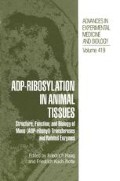Abstract
We searched the database of expressed sequence tags (dbEST) for relatives of the known human and murine mono(ADP-ribosyl)transferases (mADPRT), poly(ADP-ribosyl) polymerases (PARP), ADP-ribosyl cyclases, and ADP-ribosylarginine hydrolases (ARH). By May 31, 1996, all of the known enzymes except for RT6 were represented in dbEST by exact sequence matches from mouse and/or human tissues. Several ESTs show significant sequence similarity but not identity to known mADPRTs. We isolated, cloned, and sequenced the corresponding genes. Our results show that seven human ESTs stem from a novel gene, provisionally designated LART, which is specifically expressed in lymphatic tissues. Five human ESTs stem from a novel gene, here designated TART1, which is specifically expressed in testis. This gene is also represented by a single mouse EST. One other mouse EST stems from a distinct gene, here designated TART2, which is also expressed in testis. These genes have similar exon/intron structures. The predicted LART and TART1 gene products contain hydrophobic N- and C-terminal signal peptides characteristic for GPI-anchored surface proteins, TART2 lacks the GPI-anchor signal peptide. The predicted native proteins show 28-42% sequence identity to one another. They each contain four cysteine residues that probably form conserved disulfide bonds. They each also contain a conserved glutamic acid residue within the proposed active site motif. LART and TART1 show interesting deviations from the surrounding consensus sequence.
Access this chapter
Tax calculation will be finalised at checkout
Purchases are for personal use only
Preview
Unable to display preview. Download preview PDF.
References
Boguski, M. 1995. The turning point in genome research. TIBS 20: 295–296.
Bassett, D. E., M. S. Boguski & P. Hieter. 1996. Yeast genes and human disease. Nature 379: 589–590.
Altschul, S. F., W. Gish, W. Miller, E. W. Myers & D. J. Lipman. 1990. Basic local alignment search tool. J.Mol. Biol. 215:403–410.
DeMurcia, G. & J. MénissierDeMurcia. 1994. Poly(ADP-ribose)polymerase: a molecular nick-sensor. Trends Biochem. Sci. 19: 172–176.
ltoh, M., K. Ishihara, H. tomizawa, H. Tanaka, Y. Kobune, J. Ishikawa, T. Kaisho & T. Hirano. 1994. Molecular cloning of murine BST-1 having homology with CD38 and Plysia ADP-ribosyl cyclase. Biochem. Biophys. Res. Commun. 203: 1309–1317.
Moss, J., S. J. Stanley, M. S. Nightingale, J. J. Murtagh, L. Monaco, K. Mishima, H. C. Chen, K. C. Williamson & S. C. Tsai. 1992. Molecular and immunological characterization of ADP-ribosylarginine hydrolases. J. Biol. Chem. 267: 10481–8.
Zolkiewska, A., M. S. Nightingale & J. Moss. 1992. Molecular characterization of NAD.arginine ADP-ribosyltransferase from rabbit skeletal muscle. Proc. Natl. Acad. Sci. USA 89: 11352–11356.
Koch-Nolte, F., M. Kühl, F. Haag, M. Cetkovich-Cvrlje, E. H. Leiter & H. G. Thiele. 1996. Assignment of the human and mouse genes for muscle ecto mono ADP-ribosyltransferase to a conserved linkage group on human Chromosme 11 pi5 and mouse Chromosome 7. Genomics 36: 215–216.
Koch, F., F. Haag & H. G. Thiele. 1990. Nucleotide and deduced amino acid sequence for the mouse homologue of the rat T-cell differentiation marker RT6. Nucleic Acids Res. 18: 3636.
Hollmann, C, F. Haag, M. Schlott, A. Damaske, H. Bertuleit, M. Matthes, M. Kühl, H. G. Thiele & F. Koch-Nolte. 1996. Molecular characterization of mouse T-cell ecto-ADP-ribosyltransferase Rt6: cloning of a second functional gene and identification of the Rt6 gene products. Mol. Immunol. 33: 807–817.
Koch-Nolte, F., F. Haag, R. Braren, M. Kühl, J. Hoovers, S. Balasubramanian, F. Bazan & H. G. Thiele. 1996. Two novel human members of an emerging mammalian gene family related to mono-ADP-ribosylating bacterial toxins. Genomics in press.
Haag, F., F. Koch-Nolte, M. Kühl, S. Lorenzen & H. G. Thiele. 1994. Premature stop codons inactivate the RT6 genes of the human and chimpanzee species. J. Mol. Biol. 243: 537–546.
Pawlak, A., C. Toussaint, I. Levy, F. Bulle, M. Poyard, R. Barouki & G. Guellaen. 1995. Characterization of a large population of mRNAs from human testis. Genomics 26: 151–8.
Lévy, I., Y. Q. Wu, N. Roeckel, F. Bulle, A. Pawlak, S. Siegrist, M. G. Mattéi & G. Guellaen. 1996. Human testis specifically expresses a homologue of the rodent T lymphocytes RT6 mRNA. FEBS Lett. 382: 276–280.
Koch-Nolte, F., D. Petersen, S. Balasubramanian, F. Haag, D. Kahlke, T. Wilier, R. Kastelein, F. Bazan & H. G. Thiele. 1996. Mouse T cell membrane proteins Rt6-1 and Rt6-2 are arginine/protein mono ADP-ribosyltransferases and share secondary structure motifs with ADP-ribosylating bacterial toxins. J. Biol. Chem. 271: 7686–7693.
Domenighini, M., C. Magagnoli, M. Pizza & R. Rappuoli. 1994. Common features of the NAD-binding and catalytic site of ADP-ribosylating toxins. Mol. Microbiol. 14: 41–50.
Ruf, A., J. M. DeMurcia, G. M. DeMurcia & G. E. Schulz. 1996. Structure of the catalytic fragment of poly(ADP-ribose)polymerase from chicken. Proc. Natl. Acad. Sci. USA 93: 7481–7485.
Haag, F., G. Kuhlenbäumer, F. Koch-Nolte, E. Wingender & H.-G. Thiele. 1996. Structure of the gene encoding the rat T cell ecto-ADP-ribosyltransferase RT6. J. Immunol. 157: 2022–2030.
Koch-Nolte, F., M. Kühl, F. Haag, M. Cetkovich-Cvrlje, E. H. Leiter & H. G. Thiele. 1996. Assignment of the human and mouse genes for muscle ecto mono ADP-ribosyltransferase to a conserved linkage group on human Chromosme 1 1pl5 and mouse Chromosome 7. Genomics 36: 215–216.
Author information
Authors and Affiliations
Editor information
Editors and Affiliations
Rights and permissions
Copyright information
© 1997 Springer Science+Business Media New York
About this chapter
Cite this chapter
Braren, R. et al. (1997). Use of the EST Database Resource to Identify and Clone Novel Mono(ADP-Ribosyl)Transferase Gene Family Members. In: Haag, F., Koch-Nolte, F. (eds) ADP-Ribosylation in Animal Tissues. Advances in Experimental Medicine and Biology, vol 419. Springer, Boston, MA. https://doi.org/10.1007/978-1-4419-8632-0_19
Download citation
DOI: https://doi.org/10.1007/978-1-4419-8632-0_19
Publisher Name: Springer, Boston, MA
Print ISBN: 978-1-4613-4652-4
Online ISBN: 978-1-4419-8632-0
eBook Packages: Springer Book Archive

